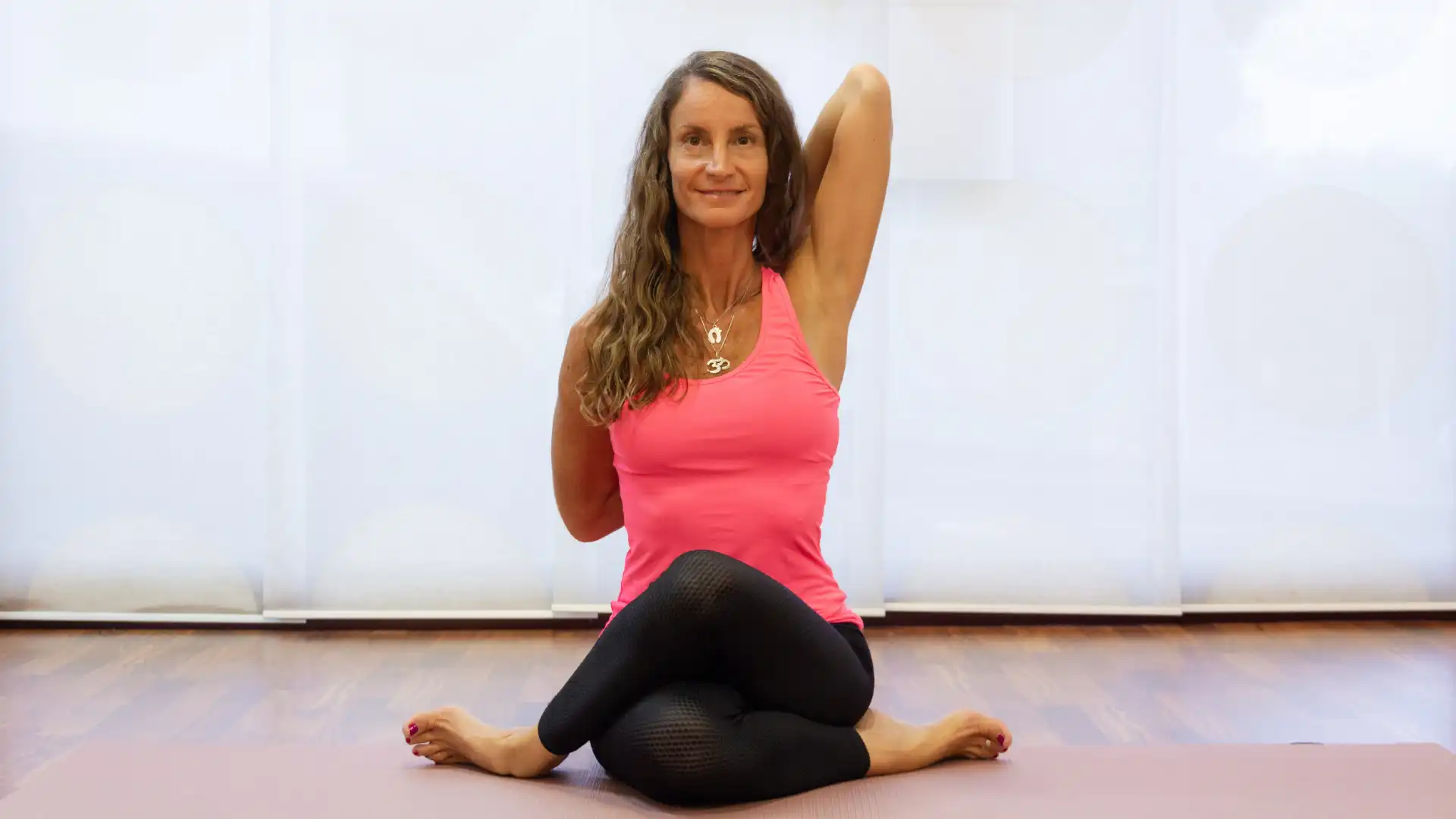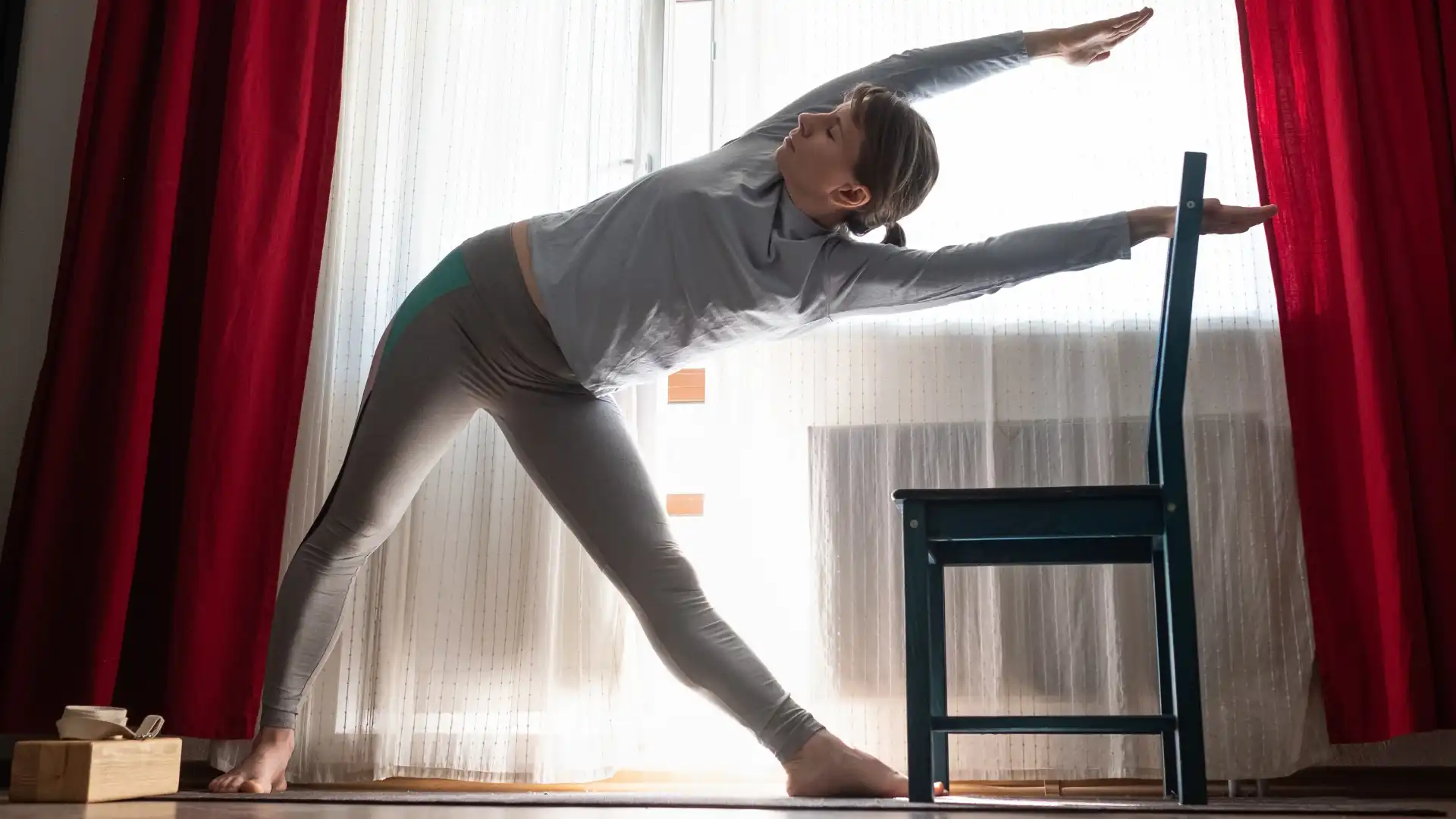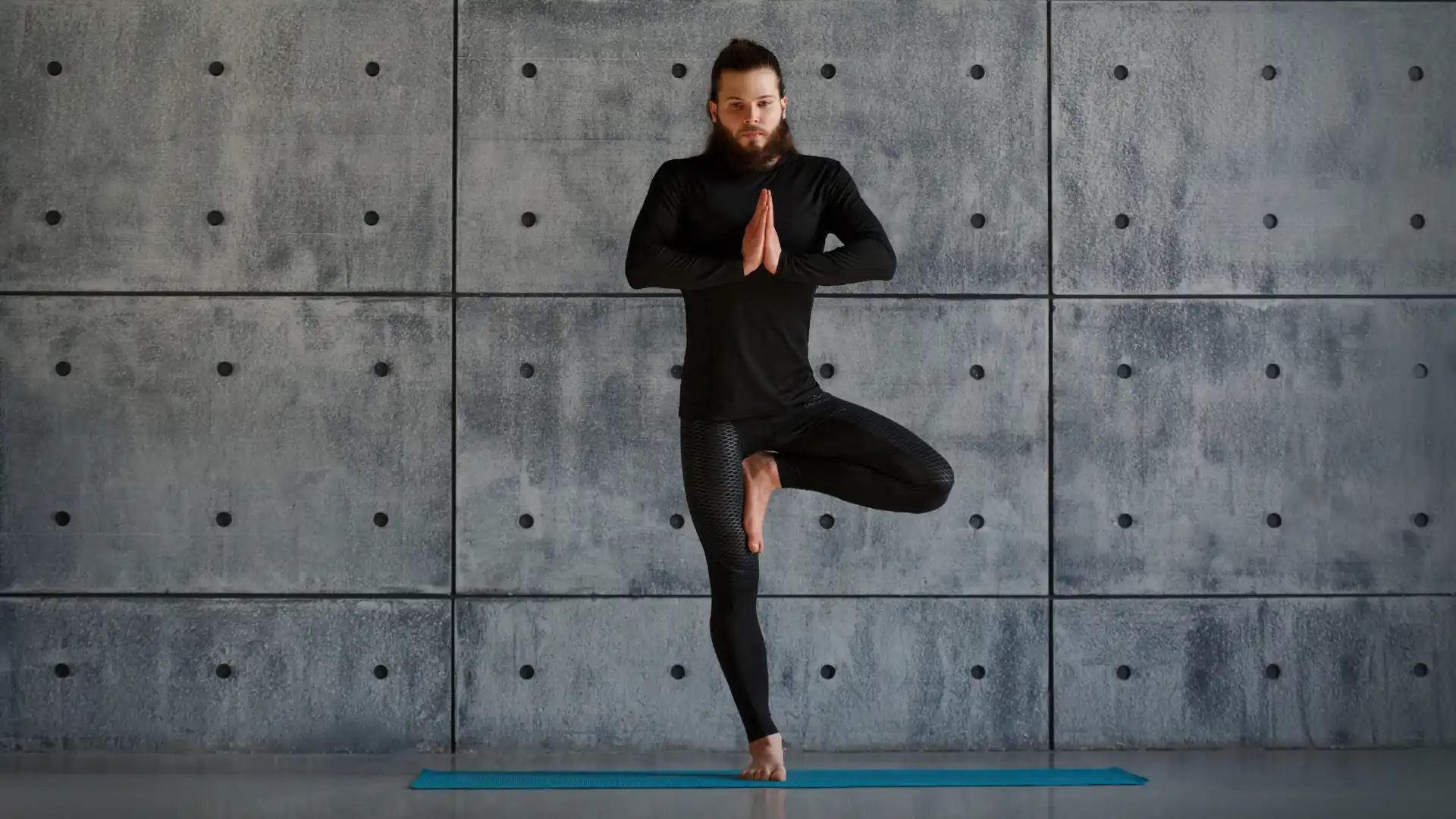That Darned Asymmetry: 5 Reasons to Love Your Imbalances

We are all out of balance to some degree.
Trikonasana (Triangle Pose) to the right may be a luxurious journey over smoothly oiled joints and long muscles. Turn to the left, and it feels like there’s sand in your joints and your hamstrings have, inexplicably, snapped an inch shorter.
There’s the one wobbly standing leg in Virabhadrasana III (Warrior III Pose), the uber-tight shoulder in Gomukhasana (Cow Face Pose), the short hamstrings on one side in Janu Sirsasana (Head-to-Knee Pose). They bump us up against our limitations in every two-sided pose.

It’s true that asana practice promotes symmetry, and that much of our work consists of bringing our bodies into balance. As the excellent website for the Iyengar Yoga Association of Greater New York has it:
“People tend to stretch from their more flexible areas and rely on their better-developed muscles for strength, thus reinforcing postural habits. Iyengar Yoga encourages weak parts to strengthen and stiff areas to release, thus awakening and realigning the whole body. As the body moves into better alignment, less muscular work is required and relaxation increases naturally.”
Why You Should Cherish Your Imbalances
But I can think of five good reasons to cherish our imbalances, even as we yes, work to change them.
1. Asymmetry Wakes You Up
Every time we take a two-sided pose, our hips, shoulders, and hamstrings make sure that we have two different experiences. There’s more to notice, less of a tendency to fall into habit patterns and space out. On really dramatic differences—kicking up with the second leg in Adho Mukha Vrksasana (Handstand Pose), for instance—it’s less a different pose than a whole new, if somewhat unwelcome, continent to explore. Nonetheless, asymmetry keeps it new.
2. Asymmetries Introduce You to Your Own Body
Yogis know which hip is stiff, which shoulder is tight, which set of hamstrings resists in forward bends. Long before the stiff hip starts to wake us up in the middle of the night with a dull ache or a sharp pain, we’re at work on the solution.
As we resolve imbalances on one level, another level appears, a lot like peeling an onion. Janu Sirsasana used to be hard on my left side because the hamstrings were tighter. My left hamstrings are still tighter than the right, but now they have enough give for the pose. Now it’s the right side that’s more restricted, because my slight scoliosis, which I didn’t much notice before, takes me more easily to the left.

3. Asymmetries Allow Insight into our Judgments
Do you label the sides as “easy” and “hard,” or worse, “good” and “bad?” Is there a moral judgment implied on that problematic shoulder? My own preference is for “sticky” and “smooth,” in part because there are times when “sticky” is good.
4. Both Smooth and Sticky Have Their Benefits
When you’re on the sticky side, you aren’t tempted to glide on through to your deepest place. That means you have time to stop and feel the effect of every action, and what you learn will stick with you—an example of good stickiness at work.
5. The Tighter Side Teaches Friendliness and Curiosity
Since we always seem to find ourselves the most difficult people to be friendly to, all opportunities are welcome.
How do you feel about your imbalances? Are you just finding out what they are? Have you developed ways to work with them?
Also, read...
2 Upward Bow Pose Variations to Expand Your Heart Space
5-Step Yoga Sequencing for Shoulderstand
A Gentle Twisting Yoga Sequence to Just Feel Good
Related courses
Journey to Center: A Yoga Guide to Unlock the Full Potential of Your Core
Yoga for Healthy Hips: Principles for a Safe Practice
Need an Energy Makeover? How Yoga Can Help You Boost Vitality

Eve Johnson taught Iyengar Yoga for 18 years before being introduced to Spinefulness in 2016. Convinced by the logic, clarity, and effectiveness of Spinefulness alignment, she took the teacher training course and was certified in July 2018. Eve teaches Spineful Yoga over Zoom and offers an online Spinefulness Foundations course. For course information, go to http://spinefulness.ca.
